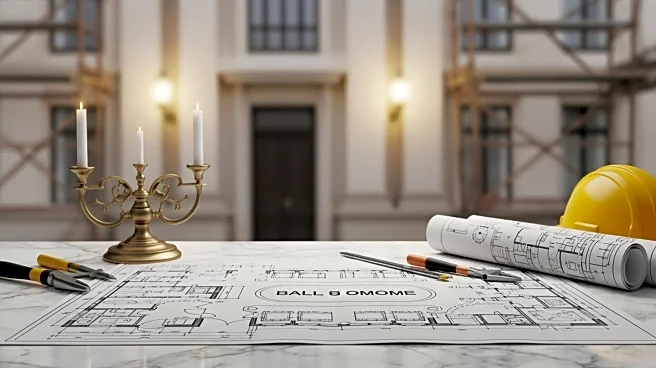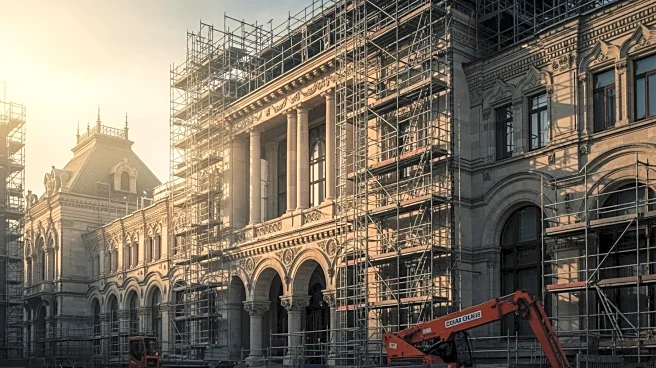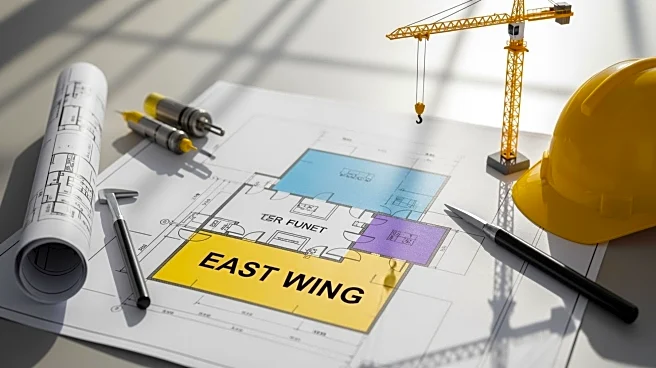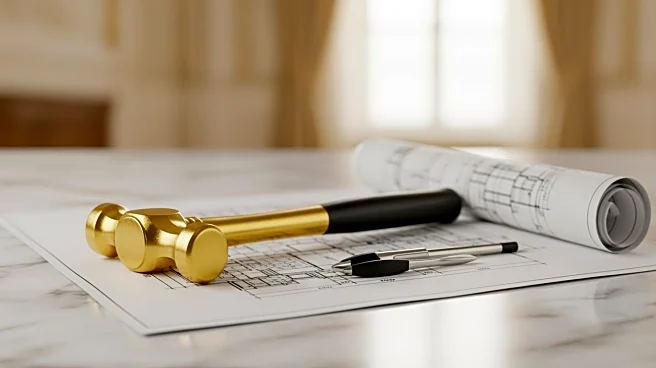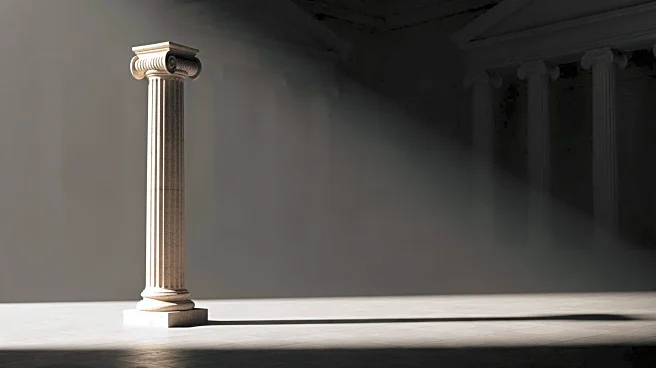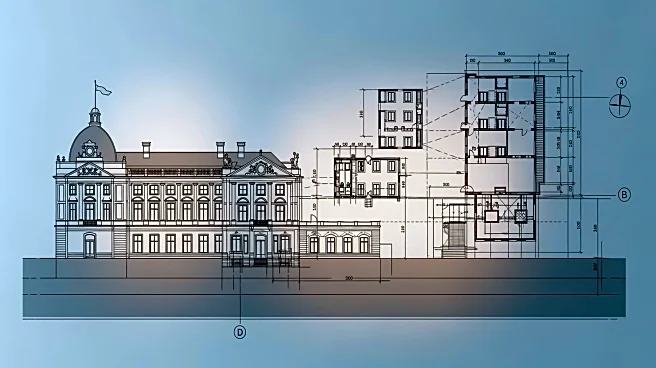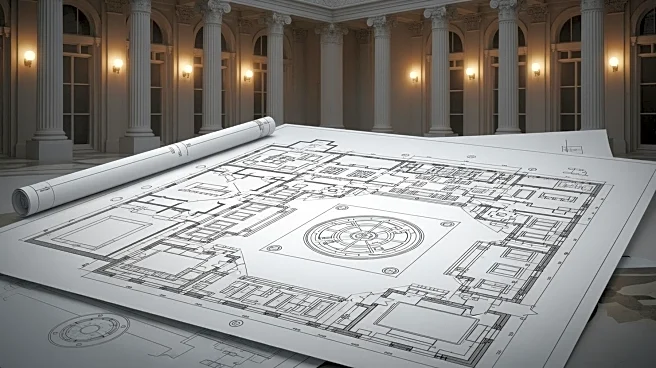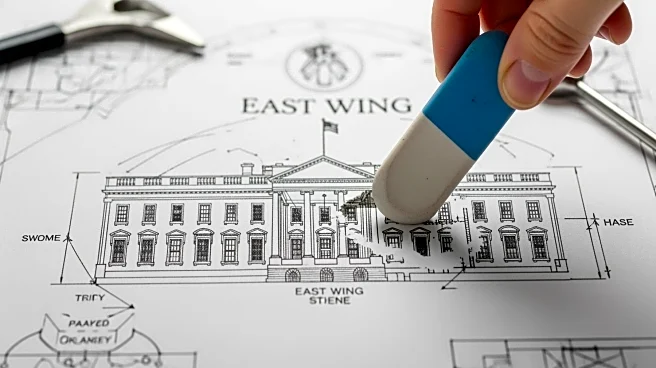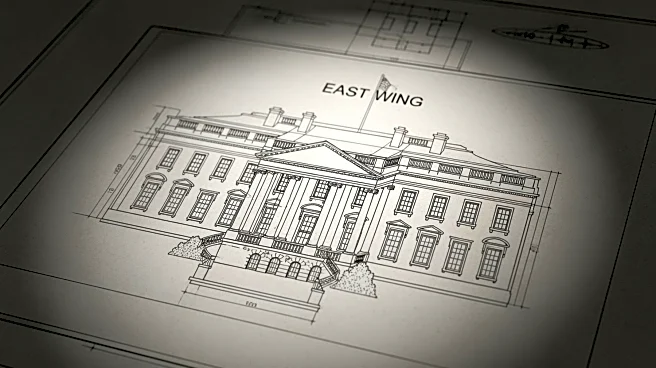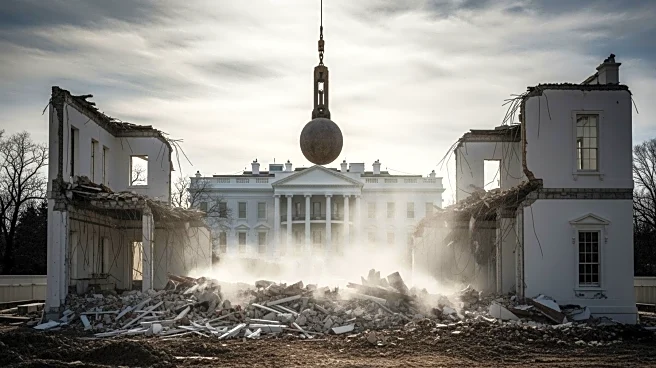What's Happening?
The White House East Wing has been demolished to facilitate the construction of a new ballroom, following President Donald Trump's earlier comments that the new space would not interfere with the existing
structure. According to Trump administration officials, the decision to demolish the entire East Wing was made during the planning process, as it was deemed the most viable option. This development comes months after President Trump initially announced the project, emphasizing that it would not disrupt the current building. The demolition and subsequent construction are part of a broader initiative to enhance the White House's facilities.
Why It's Important?
The demolition of the East Wing for a new ballroom reflects President Trump's ongoing efforts to leave a lasting mark on the White House infrastructure. This move could have significant implications for the historical preservation of the White House, as the East Wing has been a part of the building's structure for decades. The decision may also spark debate among historians and preservationists regarding the balance between modernization and maintaining historical integrity. Additionally, the construction project could influence public perception of President Trump's priorities, particularly in terms of resource allocation and focus on legacy projects.
What's Next?
As the construction of the new ballroom progresses, it is likely to attract attention from various stakeholders, including political leaders, historians, and the public. There may be discussions about the architectural design and its alignment with the historical aesthetics of the White House. Furthermore, the project could prompt reactions from preservationist groups concerned about the impact on the White House's historical value. The administration may need to address these concerns and provide transparency about the project's scope and objectives.
Beyond the Headlines
The decision to demolish the East Wing for a new ballroom could set a precedent for future modifications to the White House. It raises questions about the extent to which modern needs should influence changes to historically significant buildings. This development may also lead to broader discussions about the role of presidential legacies in shaping national landmarks and the potential implications for future administrations.
